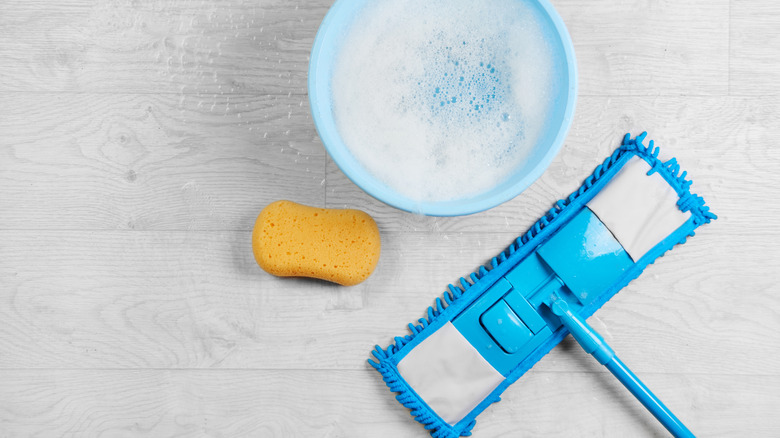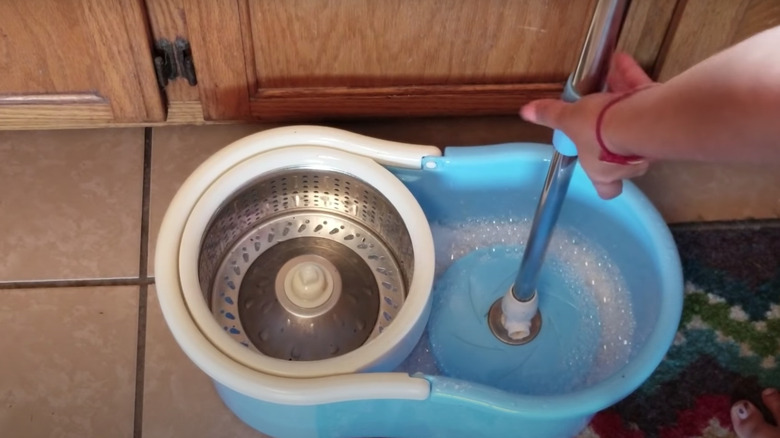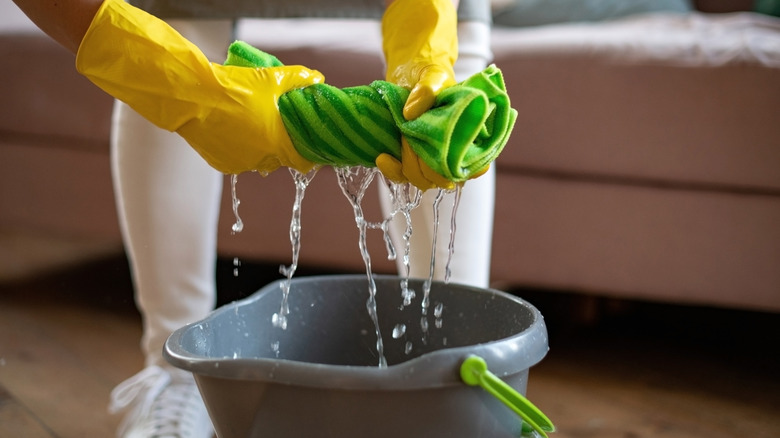Should You Really Wash Your Brand-New Mop Before Using It? Here's What The Experts Say
Many of us clean our floors with different types of mops; however, cleaning the floor correctly is an art in itself, and it's much more than getting a brand-new mop, tearing the plastic cover apart, putting it in a bucket full of cleaning solution, and mopping the floors as is.
If you use your new mop prior to cleaning it, you'll feel disappointed that the floor is still as dusty and dull as before. To avoid this from happening, it's crucial to wash your mop thoroughly before cleaning your home. To prevent any debris or bacteria from entering your house, you have to "make sure to wash microfiber cloths separately from other fabrics to make sure they don't get clogged up with lint, and don't use fabric softener or you'll leave a layer of residue similar to what you were trying to remove in the first place," Rebeca Medina, founder of Tidy Home Cleaning Services, told The Spruce. If you have made these faux pas before, we'll show you how to clean your mops correctly and how often you should do it.
How to clean your new mop
Washing your brand-new mop heads before using them is necessary to keep them in peak condition. Additionally, washing your new mops, cleaning rags, and dusters will help eliminate any coating materials, excessive dust, debris, and even intense fragrances used during manufacturing from their fibers.
To maintain your house clean and allergen-free, wash your mop using 1 gallon of hot water and 1 cup of white vinegar; let it sit in the solution for a few minutes and rinse it thoroughly until the water runs clear. You can use your mop bucket for this task as long as it's clean. On the contrary, if your mop head is machine-washable, throw it in the laundry machine and run a short but hot-temperature cycle to eliminate dust and bacteria. Allow it to dry completely, whether in the dryer or under the sun; remember not to store damp cleaning tools to prevent bacteria from growing and developing foul odors. Remember to get a new mop head once every few months or when it starts to stain or shed fibers. Repeat the entire process regularly or after each use to keep your mops clean and allergen-free.
Prevent possible allergies
Despite being used for dusting and cleaning, mop heads commonly attract dust particles and debris from the environment, as they're usually made of fibrous materials. This means when your mop collects dirt from the floors, it can quickly build up. Additionally, said dust and debris in brand-new mops can cause or trigger allergies in humans and pets. Sneezing, stuffy or runny nose, skin irritation, and even itching are symptoms you can suffer when letting dusty particles into your home (via the American College of Allergy, Asthma & Immunology)
Dust allergies can be controlled if you clean your house correctly with the right tools and cleaners. Despite your floors looking dust-free, it's advisable to vacuum them before mopping to avoid pushing the dust around; if you don't have a vacuum, using a broom and dustpan is also acceptable. Also, use a vacuum or an air purifier with a HEPA filter to prevent small particles from returning to the air. Following experts' advice for keeping your cleaning materials in good condition is one of the best courses of action for a responsible homeowner; better to just get rid of any allergen in its fibers from day one and enjoy a clean house than to deal with the possible health conditions down the line.


